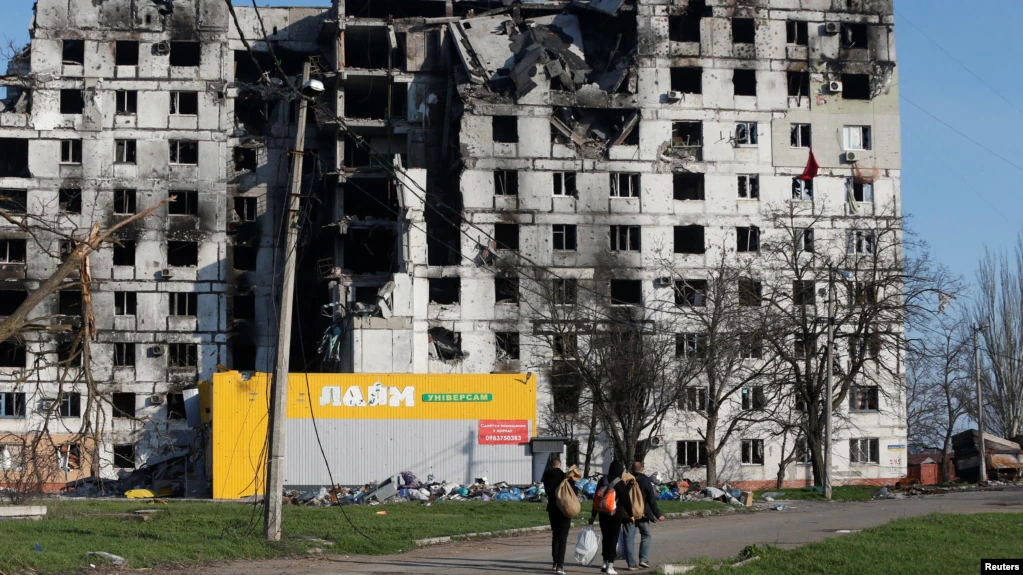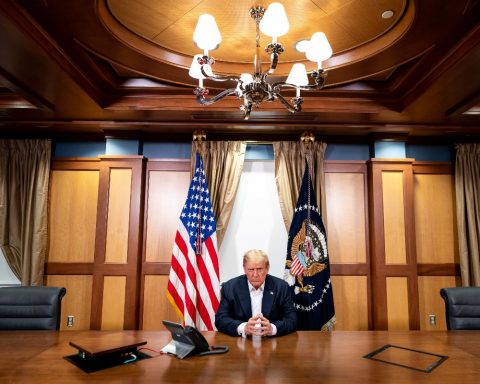Russian President Vladimir Putin said on April 21 that the Ukrainian city of Mariupol had been “liberated” after nearly two months of fighting, but U.S. President Joe Biden said this claim was “questionable” as he announced another $1.3 billion in U.S. aid for Ukraine.
Biden said that, despite Putin’s claim, “There is no evidence yet that Mariupol is completely fallen.”
Speaking at the White House, Biden said a new package of $800 million in military aid will go “directly to the front lines of defending freedom” to support brave Ukrainian forces and civilians who are fighting the Russian invasion in the region.
“We’re in a critical window now, of time where they’re going to set the stage for the next phase of this war,” Biden said, adding that the United States and allies are “moving as fast as possible” to provide Ukraine with the equipment and weapons it needs.
Biden also announced $500 million in direct economic assistance that the United States will provide to Ukraine to help the country stabilize its economy.
His announcement came as the fate of Mariupol hung in the balance, with the city’s Ukrainian defenders trapped in the sprawling Azovstal steel plant.
Putin earlier ordered Defense Minister Sergei Shoigu to cancel plans to storm the facility and instead blockade it in order to protect the lives of Russian soldiers.
During a televised meeting on April 21, Shoigu told Putin that “all of Mariupol is under the control of the Russian Army” and Moscow-backed separatists, while the Azovstal plant “is securely sealed off” after weeks of heavy bombardment and intense fighting throughout the city, where tens of thousands of civilians are trapped amid what aid workers have called “apocalyptic” conditions.
Shoigu told Putin that more than 2,000 Ukrainian fighters were still holed up in the vast plant, which has a large underground component to it, and claimed that Russian forces only needed several days to “complete” the takeover of the compound.
Putin said during the meeting it would be “impractical” to storm the huge industrial complex as there was “no need to climb into those catacombs and crawl underground beneath those industrial facilities.”
Shoigu said that more than 142,000 civilians were evacuated from the Sea of Azov port through humanitarian corridors — a claim contradicted by Ukrainian officials who said that only a small number of refugees have been allowed to leave the city since the start of the war on February 24.
Earlier on April 21, Ukrainian Deputy Prime Minister Iryna Vereshchuk said only four buses carrying evacuees left Mariupol on April 20 instead of a planned 90 buses expected to transport 6,000 people due to the Russian forces’ “disorganization and negligence.”https://www.rferl.org/a/mariupol-siege-ukraine-war/683032/1/31770464.html
She said in a statement on Telegram that the evacuation of women, children, and the elderly would continue on April 21.
Meanwhile, Russian troops continued their all-out offensive in eastern Ukraine as Kyiv proposed to hold a “special round” of negotiations in Mariupol.
A British military update on April 21 said that Russian forces are advancing from staging areas in the Donbas toward the city of Kramatorsk, which continues to be hit by rocket fire.
“High levels of Russian air activity continue as it seeks to provide close air support to its offensive in eastern Ukraine, and to suppress and destroy Ukrainian air defense capabilities,” Britain’s Ministry of Defense tweeted in a regular bulletin.
After failing to seize Kyiv and other large and strategic cities in its nearly eight-week war, Moscow now says its aim is to capture the full provinces of Donetsk and Luhansk, which have been the focus of Russia-backed separatists since 2014.
Ukrainian President Volodymyr Zelenskiy said Ukraine needs more heavy weapons to defend itself and asked Western nations to impose further sanctions.
Speaking in a video address to the Portuguese parliament on April 21, he accused the Russian Army of committing many atrocities in Ukraine, including in the port city of Mariupol, and asked Portugal to support a global embargo on Russian oil.
Satellite imagery from near Mariupol shows a mass grave site that has expanded in recent weeks to contain more than 200 new graves, a private U.S. company said.
Maxar Technologies said a review of images from mid-March through mid-April indicates the expansion began March 23 and March 26. The site lies adjacent to an existing cemetery in the village of Manhush, 20 kilometers west of Mariupol, Maxar said.






